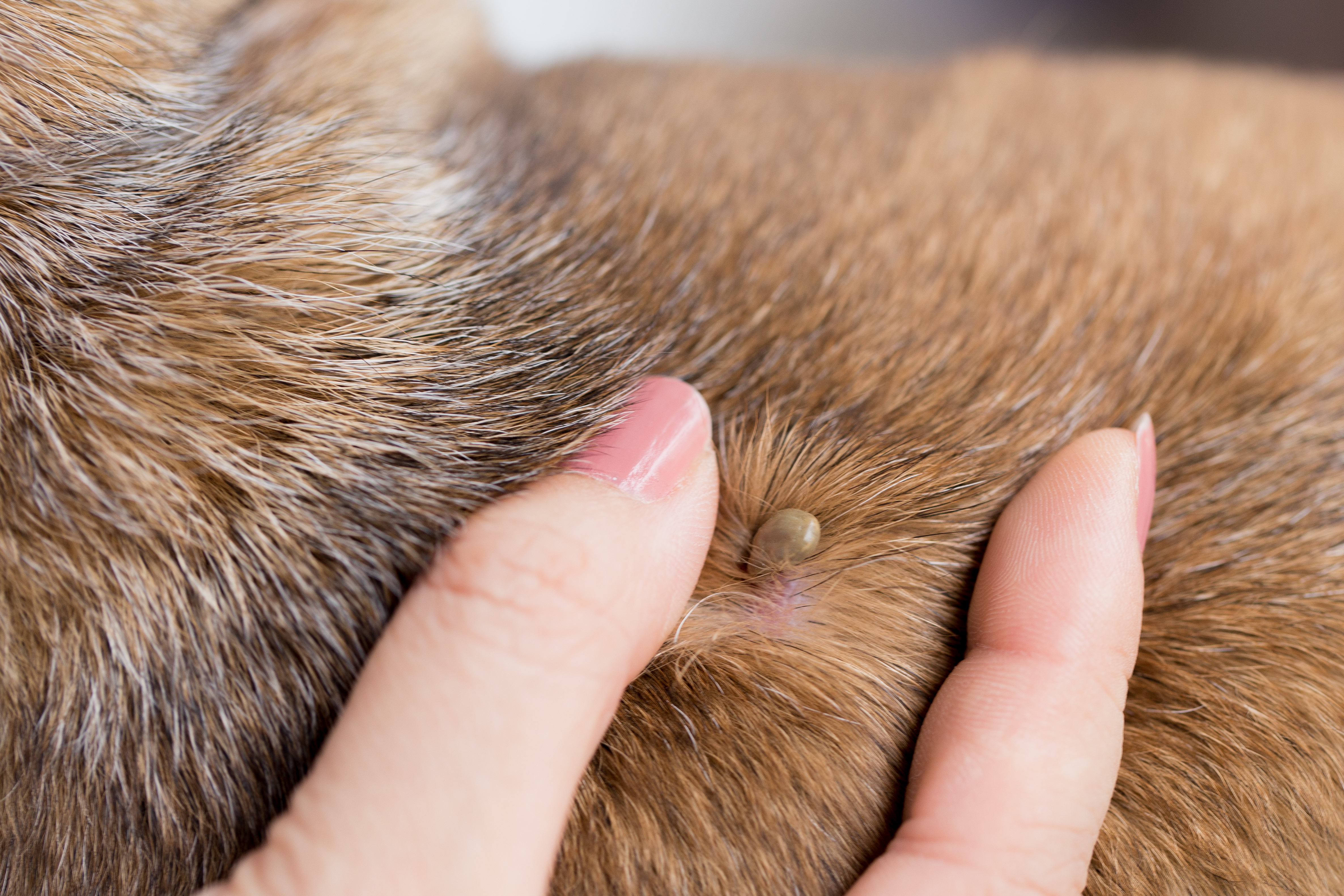Tick Bite Awareness!
Blog , +1
February 17, 2020

Written by: Skinner’s Nutrition Team
Ticks are the things of nightmares! Small creatures that actively hunt for their victims, latch on to them, embed their heads in their victim’s tissues and then casually feed on the blood of their new “host”. It sounds dramatic, but this is exactly what ticks do, and they can be problematic for our dogs.
Ticks are small, spider-like creatures that are often found in grassy or wooded areas. Ticks are described as “ectoparasites”, which means they are small organisms that live on and feed off the surface of a larger organism (the host).
Most ticks are harmless and cause little more than temporary irritation (and sometimes sheer alarm!) but it is worth being alert to them and some of the problems they are associated with.
There are several different species of ticks that typically affect particular animals (the sheep tick, the deer tick, the hedgehog tick and so on), but some of these are capable of hopping onto other host species. Indeed, ticks can affect both us and our dogs! Many dog walkers will report having walked in certain places of finding the little creatures embedded either on them, or their dogs. The other issue is that when ticks first attach, they are tiny and they are often only noticed when they have fed on enough blood to have increased significantly in size, often to the size of a pea!
Removing any ticks found is important, and a proper tick removal tool is recommended. Old fashioned methods of removal can be problematic and as the tick effectively buries its head into host tissues, unless the whole tick is removed, the head can be left behind and cause subsequent issues, notably an infection risk. The other important point about tick removal is that some ticks unfortunately carry diseases and can transmit these to their host animal when feeding. Some of these diseases, such as Lyme disease, can be particularly debilitating and have long lasting consequences. For this reason, during tick season (typically spring, summer and early autumn in the UK) it is worth checking your dog (and yourself!) regularly if walked in areas where ticks are known to be a problem.
It might also be worth chatting to your vet about possible treatments and preventative measures that you can take for your dog, based on any local risks or specific disease awareness. Equally, if after removing a tick for either yourself or your dog, there is excess swelling, redness, pain, fever or other symptoms, seek veterinary or medical assistance as soon as possible. Early management and treatment of possible infections is critical.
Being tick aware is important for both you and your dog and can help to reduce the possible risks that tick exposure can bring!


